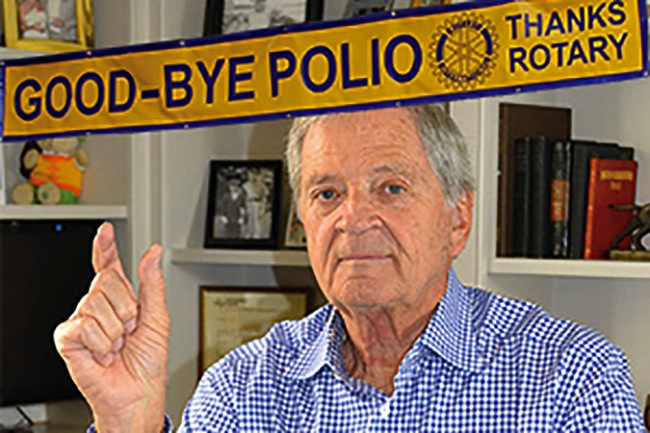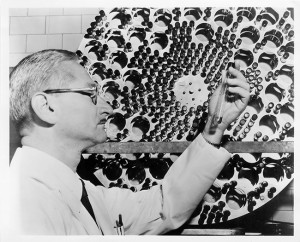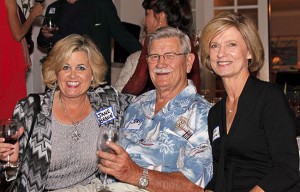“Goodbye Polio. Thanks Rotary.”
The year was 1952 and 15-year-old Mike Dorn, then a strapping young high school sophomore in his native state of Minnesota, had just completed an afternoon of football practice.
He remembers the fall day vividly. “I came home totally exhausted. I ached all over and I couldn’t move.”
The doctor was called and he quickly diagnosed Mike’s symptoms. “He’s got polio,” he grimly told Mike and his parents.
Today, because polio has been eradicated in this country, many Americans might be unfamiliar with polio and its effects on its victims. Polio is a virus (poliomyelitis) that attacks the nervous system and is transmitted by direct contact with another person carrying the disease. It multiplies within the intestines. It weakens or kills nerves, which are needed to control muscles and then focuses its attack on the spinal cord. It can permanently twist limbs and spinal columns into grotesque and painful positions and shapes. It can paralyze the chest muscles that control breathing with victims literally suffocating. In the mid-20th century, many hospital wards were filled with children in iron lungs designed to help them breathe.
An ambulance rushed young Mike to Sister Kenny Hospital, a hospital in Minneapolis run by nuns that was devoted to polio patients. Totally paralyzed and unable to sit up, Mike was placed in an isolation chamber with two other men, also stricken with the polio virus.
“Typically, polio victims are put in isolation for a week to ten days to allow them to pass the stage when they can infect someone else,” said Dorn, who believes he caught the polio virus from a -fellow football player, the result of a close contact sport. (Some people carry the virus, never succumbing to the disease.)
“They wouldn’t let your family come in,” he said of his time in the isolation chamber. “But I did see them. My mom and dad would wave to me through a window, although I couldn’t hear their voices because the glass was so thick. But their presence was a big help; it gave me the encouragement to live.”
He still remembers the groans and constant complaints of the other two men in the chamber. “At the end of the third day, doctors came in to check the guy at my side. He was dead. I still remember when they wheeled him out on a gurney.
“I was so scared after he died and then three days later, the other guy died.”
Decades after the trauma, as he relates his story, Dorn is reliving the experience. His words are intense; his eyes grow moist. “I thought I would be next,” he said. “I couldn’t even lift my head, I was so tight. All I knew was that I wouldn’t complain; I would remain strong.
“And I prayed like I have never prayed before in my life. I made promises to the good Lord. I told Him, ‘Please let me live and I’ll volunteer and help anyone I can to thank you for the gift of life that you gave me.’”
The Lord listened.
The nuns came in frequently to check on Dorn and they began leading him on a slow and grueling road to recovery. “They would take these hot green wool towels — I mean, they were burning hot — and wrap them around my arms and then place plastic around that to keep the heat in,” said Dorn. “Then they’d put me on a table and one person would pull on my arms and one person would push on my back. It took a month to sit up fully and bend forward and put my head between my knees.”
Next, the nuns got the young man up and slowly walking. After three months, Dorn was sent to live with his grandparents in Florida. “The doctors said I needed to be in hot weather,” he said.
He returned home that March and by the following year was able to water ski; a year later, he was snow skiing.
But Dorn was not out of the woods for good. Decades after their recovery from paralytic polio, some polio victims begin to experience new weakness and atrophy in their muscles, especially in those muscles that were severely affected by the original illness. In 1972, 20 years after initially contracting polio, Dorn was hit by the postpolio syndrome. “The left side of my body slowly got weaker and I lost all strength in my leg. I could only walk with a limp.
“It just devastates you because you can’t believe it’s happening again,” he said. “I started going back to the Sister Kenny Institute.” (Now that polio has been eradicated in the U.S., the institute has closed.)
Dorn learned that postpolio management means keeping a constant check on judicious rest and non-stressful exercise. “If you try to recover by over-exercising, you can end up in a wheelchair,” he said. “You need to minimize the efforts. I exercise not for strength training, but for flexibility.”
Today, Dorn still walks with a bit of a limp and his left foot turns outward a bit. But his upbeat attitude and healthy lifestyle — he bikes three times a week and also exercises three times a week — masks his chronic back pain. Since 2000, he’s had two back surgeries, one neck surgery and rotator cuff surgery.
Mike and Linda Dorn moved to Coronado from Pebble Beach about five years ago. They also had a series of summer homes in the Coronado Cays since 1992 when they lived in Arizona, where Mike was a residential and commercial developer. He joined Rotary Club of Coronado last year, wanting to be of service to the community but also fully aware of Rotary International’s commitment to eradicate polio from the face of the Earth.
Rotary International, and its partners UNICEF, the U.S. Centers for Disease Control and Prevention, the World Health Organization, the Bill & Melinda Gates Foundation and governments of the world, has reduced polio cases by 99 percent worldwide since Rotary’s Polio Plus campaign began in 1985.
The Bill & Melinda Gates Foundation joined with Rotary in 1999 and Bill Gates spoke on the combined effort at the Rotary Convention in New Orleans in 2011.
“Without Rotary, this polio campaign wouldn’t be anywhere,” Gates said. “The incredible effort that has been made from the very beginning is really unprecedented. You can’t think of an organization that has put its reputation on the line and taken all of its capabilities — having volunteers and a voice about the importance (of the campaign) — it’s really an unbelievable thing.
“If we stopped the intense efforts, polio wouldn’t just stay down at a few hundred cases, it would go up to hundreds of thousands of cases,” Gates cautioned. “So the cost of that suffering and the terrible loss that would be created by that is really unbearable. So we need to push and get this thing to the final case.”
The year Dorn contracted polio was the peak year of the disease in the United States, with 66,000 cases on record. The polio virus paralyzed and killed up to half a million people every year until Jonas Salk, head of the Virus Research Lab at the University of Pittsburgh, produced a vaccine in 1955.
In 1961, an oral polio vaccine was invented by Dr. Albert Sabin. From 1963, the U.S. was using the oral vaccine in mass polio campaigns and by 1979 transmission was stopped.
Polio remains endemic in three countries: Pakistan, Nigeria and parts of Afghanistan. There were also 323 cases reported this year in Somalia and 10 in Kenya.
Polio eradication has a four-pronged strategy: national immunizations days, routine immunization, mop-up of cases and disease surveillance. Several times over the past two decades, ceasefires have been granted to allow vaccinators to reach children.
Ron and Vicki Beaubien, active members of Rotary International, have been on the front lines of the worldwide fight against polio. Ron Beaubien, owner of Crown Island Insurance in Coronado, rose through the ranks of Rotary, serving as president of the Coronado Club, as district governor of all clubs in San Diego and Imperial counties, as a zone coordinator and on the board of Rotary International. In 2005, he and Vicki were named the president’s representatives for an NID Day (standing for national immunization day) in India.
Beaubien called Rotary’s efforts to eradicate the world of the poliovirus nothing short of Herculean. “It takes a year of planning for each NID. There were 100,000 volunteers working in New Delhi alone,” he said.
Vicki added, “There are cell phone blasts: ‘The day is coming!’ And posters and banners are displayed all over the country.”
She described the polio booths set up in marketplaces as something akin to a farmer’s market atmosphere..
Ron said that he and Vicki’s role, as with NID events throughout the world, was to assist in the marketing of the event, giving television and newspaper interviews.
Toward that end, he recalls one day when the World Health Organization told the Beaubiens they would be taking a train inland for four hours, where they had a big photo op and TV crew waiting. It seemed odd to the Beaubiens to leave New Delhi, where there was obviously a huge need for immunizations. So Vicki asked, “How’s everything going in New Delhi? Have there been any outbreaks?” They were told there had been one in the Muslim community, but that as Americans they should stay away. But the Beaubiens decided they would be going into the Muslim community the next day.
“They tried to tell us it wasn’t safe for someone who wasn’t Muslim,” Ron said. “Rumors had spread throughout the Muslim community that the inoculations were a plot by Americans.”
India had been trying to break open the Muslim community for months, said Ron, and Vicki’s efforts pushed the door, at least in New Delhi, wide open. Young mothers, some just 12 and 13 years old, rushed home to get their children. “They would all tell their husbands about this tall blonde lady from America who was so kind,” Ron said.
“It was like a line-up at a barbershop, where everyone wanted the same barber; they all wanted Vicki to immunize their children.”
The Beaubiens became great friends with Deepak Aapur, who headed the PolioPlus effort for all of India, and his wife, Vaneeta, who became like a sister to Vicki.
The atmosphere around polio immunizations is similar to Rotary’s annual pancake breakfast, Ron said. “But they put these together 30 times a year!”
Today, Ron Beaubien continues to work closely with Rotary International and is currently working on the organization’s 2014-15 annual budget (pulling together the financials, about $240 million, of all seven international Rotary offices) to be presented in April. He takes monthly trips to Rotary’s headquarters in Evanston, Ill. “which is why I miss so many meetings here,” he said of his attendance at Rotary Club of Coronado.
Ron Beaubien met Bill Gates at one of the Rotary Assemblies, and noted that Gates’ father, Bill Gates, Sr., has been a Rotarian for years.
Vicki Beaubien remembers the words of Dr. Bruce Aylward, director of the Global Polio Eradication Initiative of the World Health Organization: “’It’s like a marathon,’” he said. ‘The hardest thing is starting and the next hardest thing is finishing.’
“People get ‘donation fatigue’ they get tired of supporting the effort and want to go on to something else,” she said.
But, warns Ron, the price of not finishing the job, of not eradicating polio from the face of the Earth is huge. “In dollars, we are talking $40 billion to $50 billion if they don’t eradicate polio.”
But money alone without a core of workers is useless. “Workers will carry polio vaccine, which must be kept cold, to distant villages — by camel, by motorcycle, by helicoptor drops,” Vicki said.
“That’s where 1.2 million Rotarians come in,” Ron added, proud of every single one of his fellow members in the international service organization. “That’s free Rotarian hours.”
“We’ve had people die for this effort,” Vicki added. “Just a few months ago, some volunteers were killed in Afghanistan. There’s been a huge sacrifice just in volunteer hours.”
Conflict areas have always historically been an issue, “but we seem to be breaking in now,” Ron said. “We are taking baby steps but we are getting it done. There have been cease fires in Afghanistan; the Taliban has helped with that process. The Taliban has gotten bad press but they have the same feeling for their children as we do for ours.”
Anyone can give to the End Polio Now campaign, Vicki said. “They don’t have to be a Rotarian.” (See contact information at the end of the article.)
Persons interested in donating to Rotary’s PolioPlus campaign can call the Coronado Rotary office at (619) 435-8334 or email info@coronadorotary.org. Donations made through the Coronado Rotary Club are subject to matching funds by the Bill & Melinda Gates Foundation. Credit cards are accepted.
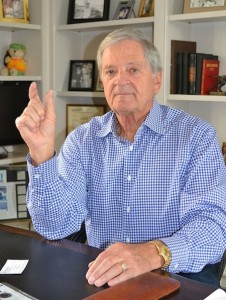 “We’re this close,” says Mike Dorn, on Rotary International’s campaign to eradicate polio worldwide.
“We’re this close,” says Mike Dorn, on Rotary International’s campaign to eradicate polio worldwide.
 In the 1950s, when the polio virus was feared by every parent in the United States, thousands of victims, most of them children, were kept alive by iron lungs, which occupied floors of hospital wards. The lungs kept people breathing by holding them from the neck down in a metal tank.
In the 1950s, when the polio virus was feared by every parent in the United States, thousands of victims, most of them children, were kept alive by iron lungs, which occupied floors of hospital wards. The lungs kept people breathing by holding them from the neck down in a metal tank.
Air pressure was then modulated by vacuum tubes and the changes in air pressure pulled air in and out of people’s lungs.
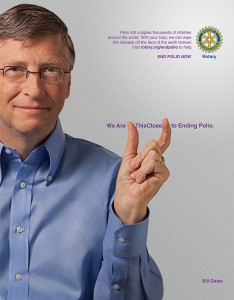 Bill Gates is one of a growing cadre of international celebrities including Queen Noor of Jordan, Nobel Peace Prize Laureate Archbishop Desmond Tutu, premier violinist Itzhak Perlman and conservationist Jane Goodall who are raising their thumb and forefinger to let the world know that “We’re This Close” to eradicating polio.
Bill Gates is one of a growing cadre of international celebrities including Queen Noor of Jordan, Nobel Peace Prize Laureate Archbishop Desmond Tutu, premier violinist Itzhak Perlman and conservationist Jane Goodall who are raising their thumb and forefinger to let the world know that “We’re This Close” to eradicating polio.
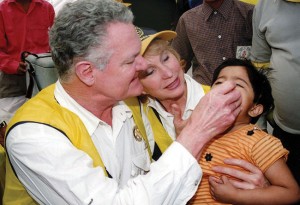 Ron Beaubien, owner of Crown Island Insurance, and his wife, Vicki, administer oral polio vaccines to children as part of the Rotary National Immunization Day in New Delhi, India, in 2005.
Ron Beaubien, owner of Crown Island Insurance, and his wife, Vicki, administer oral polio vaccines to children as part of the Rotary National Immunization Day in New Delhi, India, in 2005.
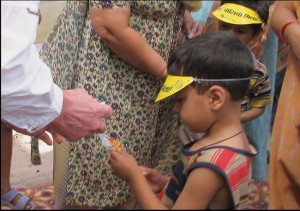 Thousands of children are immunized at NIDs (National Immunization Days), like this one in India. India is in its third year of having no polio cases on record; at the end of the year, if no cases are reported, it will be declared a polio free nation.
Thousands of children are immunized at NIDs (National Immunization Days), like this one in India. India is in its third year of having no polio cases on record; at the end of the year, if no cases are reported, it will be declared a polio free nation.
 The oral polio vaccines, which must be kept cold, are delivered by many modes of transportation, including bicycles, to remote villages.
The oral polio vaccines, which must be kept cold, are delivered by many modes of transportation, including bicycles, to remote villages.
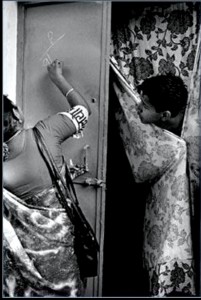 Volunteers mark the door of a home where immunizations have been administered.
Volunteers mark the door of a home where immunizations have been administered.
In September, Rotary Club of Coronado held its fourth annual wine tasting event to raise funds for the “End Polio Now” campaign. With an anonymous matching fund grant of $10,000 by a club member, club members and the Coronado community rose to the challenge, raising $33,000 in one evening. That amount will go to Rotary International where it will be matched more than two-to-one by the Bill & Melinda Gates Foundation (which has pledged $255 million to match Rotary International’s $100 million over a three-year period).
All told, the club raised more than $100,000 for polio eradication. It costs approximately 60 cents to immunize a child for a lifetime against polio, so this one event may have allowed 166,666 children to be protected against the life-threatening and life-altering disease.
Part of the enthusiasm for supporting the event was sparked by Dorn, who related his personal story to the club two weeks before the event.
“I am asking all of you to dig into your pockets,” he said in conclusion. “We’re not all safe until we totally eradicate this virus worldwide. We need to protect our grandchildren.”
On Dorn’s home office desk sits a card sent to him by his son, with a quote on the front made famous by Winston Churchill. “I always keep it front and center,” Dorn said. ‘Never, never, never give up,’ it reads.’”
Words to live by.
 Jim Kaufman hosted the Coronado Rotary Club wine tasting event for the fourth straight year at his Adella Avenue home.
Jim Kaufman hosted the Coronado Rotary Club wine tasting event for the fourth straight year at his Adella Avenue home.
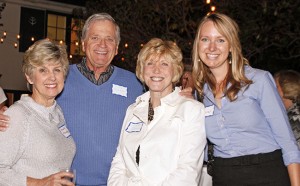 Meredith Heinecke, Mike and Linda Dorn, Nora Boswell
Meredith Heinecke, Mike and Linda Dorn, Nora Boswell
 Rotary Club of Coronado WineTasting for PolioPlus co-chairs Heidi Nevitt and Kevin Rugee
Rotary Club of Coronado WineTasting for PolioPlus co-chairs Heidi Nevitt and Kevin Rugee
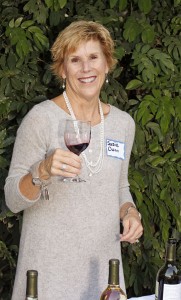 Susie Owen poured for St. Supéry Winery; she’s the winery’s National Sales Manager.
Susie Owen poured for St. Supéry Winery; she’s the winery’s National Sales Manager.
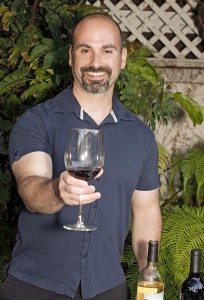 Patrick Zilaro poured selections from Zilaro Cellars; his new tasting room is on Adella Avenue
Patrick Zilaro poured selections from Zilaro Cellars; his new tasting room is on Adella Avenue
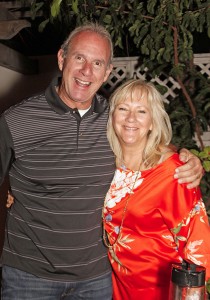 Martin Schwartz and Roberta Korte-Schwartz poured wine cocktails infused with their Coronado Taste of Oils vinegars and olive oils
Martin Schwartz and Roberta Korte-Schwartz poured wine cocktails infused with their Coronado Taste of Oils vinegars and olive oils

